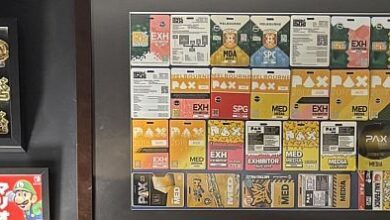The late 1970s/early 1980s in Japan found a market, like many other countries at the time, with the idea of a home video game console only emerging, with many stepping up to cash in.
Article by Drew McCabe
With numerous players abound, the arena was populated by the likes of Epoch’s Cassette-Vision and Bandai’s Arcadia (a licensed version of the North American Emerson Arcadia console), and thus Sega, after having much success in the arcades, decided to step in.
Born on July 15, 1983, Sega’s first entry into the home video game console market was known as the SG-1000. Running on 8-bits of awesome, the console actually used the same internal components as the Colecovision, giving both vibrant colors and game play.
However as fate would have it, it was released on the same day as the Nintendo Famicom (better known world wide as the NES), providing Sega with what would become a long up hill battle for dominance in the markets, one they wouldn’t win until much later on during a period of time with the Mega Drive.
Initially released in Japan, the system would soon reach both Taiwan and New Zealand. The unit came with one hard wired controller, yet interestingly had a second controller port on the back to buy an additional and plug in.
With the Famicom having what the Japanese considered a more attractive library upon its release, mixed in with feed back in regards to the SG-1000 itself, Sega immediately went back to the drawing board and from there would give us a flurry of updates over the next few years.

Sega by December of 1983 would release the SC-3000, a home computer model. This self contained key board could help you learn BASIC or do numerous business functions, but also had a rom-cartridge slot on it’s right hand side which could play the SG-1000 games. SC-3000 expanded the SG-1000 games presence further world wide with releases in Japan, Australia, New Zealand, Italy, Spain, France and Finland.
Soon after in 1984 Sega would release the SG-1000 II, an improvement on the original, the SG-1000 II got rid of the hardwired controllers, changing both to be plug-ins, changing the controller itself to resemble closer to that of a Famicom controller, and finally an expansion port for the Sega SK-1100 keyboard, which also allowed SC-3000-only games to be played on the SG-1000 II. The SG-1000 II is currently thought only to have been released in Japan and Taiwan, where in Tawain it took the lead as the number one console for a short period of time, only notable because it’s the first time Sega took number one for home video game consoles in a market, and the only time for the SG-1000 series.
Frustration being number two to Nintendo elsewhere world wide would lead Sega to improve the console and release an updated version yet again as the Sega Mark III in 1985. That said, the Mark III isn’t actually considered part of the SG-1000 line, and would prove as the base for the Sega 1986 world wide console known as the Master System.
Looking at the SG-1000, the internal core was made up of three key components, a 8-bit Zilog Z80 central processing unit, a Texas Instruments TMS9928A for video processing, and a Texas Instruments SN76489 for its sound processing. As mentioned this was the exact guts of the Colecovision, and when comparing the systems side by side, the games really do look alike.
In fact in 1986 in Taiwan, Italy and North America, a system called the Dina-2-In-One was released, which could play both Colecovision and SG-1000 cartridges. However in North America until the new millennium, for 20 some odd years the cartridge slot which could play SG-1000 games remained a puzzle being they were never released there and the mystery was only solved thanks to the birth of both the internet and eBay. The systems similarities has also lead in recent years to a number of SG-1000 titles being ported over to Colecovision by homebrewers.
The SG-1000 initially used rom based cartridges. Upon the release of the SG-1000 II, the system also had a device called the Sega Card Catcher. which plugs into the rom slot and then could play a flat-shaped rom card, similar to the PCE’s cards. Sega made a move to see if these Sega Cards would help boost the system being they were cheaper to make and thus cheaper to sell, however Sega would abandon the idea sometime into the Master System’s life.
A current documented total of 68 cartridges and 29 Sega Cards have been known to be released for it, and although there were no mascot characters for it at the time to dominant and provide notable franchise titles, like Sonic or Alex Kidd, it did have quite a few cool licensed titles based on popular Japanese anime/manga, such as “Golgo 13” and “Orgus”. The SG-1000 did also receive some 3rd party support, heavily from Konami, but oddly enough most of the arcade hits Sega insisted on programming themselves. Example “Galaga” was a fairly faithful port but Sega did the programing themselves and slightly retitled it as “Sega Galaga”, and a similar case for “Lode Runner”. Sega also ported their own numerous arcade hits as well, like “Congo Bongo” and “Zaxxon”. Also of note all cartridges and cards could be played on the Sega Mark III, however the Sega Mark III’s cartridges and cards could not be played on either SG-1000 model. This would allow the Mark III to become one of the first backwards compatible systems, only beaten by the 1984 Atari 7800.
In summary the SG-1000 is a great system with a bad rap. By the end of it’s run it sold over 2 million units world wide between the two versions (add another 120,000 units if you then lump the SC-3000 on top of it). Does it have less games, in aspects of both quantity and those that still hold up to be replayed even today, when comparing to the NES: Yes.
However, when comparing to the other systems of the time, it surely beats the hell out of the Atari 2600, and although the library is smaller, it provides better game plays than either the Intellivision or Colecovision. The past 5 years there has been a nostalgia resurgence for Sega’s body of work and the numerous used SG-1000 and SG-1000 IIs floating around the second hand market have created a new cult around the device.
If you have the time or the cash, I’d venture to see what the appeal is and nab this one.
Article by Drew McCabe







